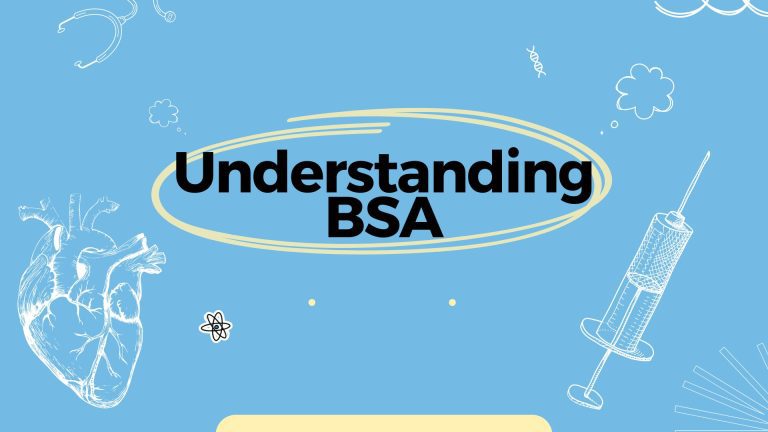Book Appointment Now

Understanding Clark’s Rule for Pediatric Dosing on the PTCB Exam
Pharmacy technicians are responsible for ensuring the safe and appropriate dosing of medications for pediatric patients. Clark’s Rule is one widely used method for estimating pediatric medication dosages.
As you prepare for the Pharmacy Technician Certification Board (PTCB) exam, mastering Clark’s Rule and its applications is essential, as it is estimated that 10 questions on the exam will involve math calculations. You can use our Calculations practice test to master this knowledge.
What is Clark’s Rule?
Clark’s Rule is a simple formula used to estimate the appropriate dose of a medication for a child aged 2-17 years based on their weight relative to an average adult’s weight. The formula is as follows:
Child’s Dosage = (Child’s Weight in lbs / 150 lbs) x Adult Dosage
To calculate the child’s dosage:
- Obtain the child’s weight in pounds (lbs).
- Obtain the standard adult dosage of the medication in milligrams (mg).
- Divide the child’s weight in lbs by 150 lbs to get a fraction.
- Multiply that fraction by the adult dosage to get the child’s dosage in mg.
For example, if an adult dosage is 400 mg and the child weighs 50 lbs: Child’s Dosage = (50 lbs / 150 lbs) x 400 mg = (1/3) x 400 mg = 133.33 mg
Therefore, the estimated dose for a 50 lb child would be approximately 133.33 mg when the adult dosage is 400 mg.
Limitations of Clark’s Rule
While Clark’s Rule provides a simple way to adjust adult medication dosages for pediatric patients based solely on their weight, it is an estimation method. It should not be used for all medications, especially those with a narrow therapeutic index or requiring more precise dosing.
Additionally, Clark’s Rule assumes a linear relationship between weight and dosage, which may not always be accurate.
Alternative methods for calculating pediatric dosages, such as those based on body surface area (BSA), may be more appropriate in certain situations. Consulting a pharmacist or physician is crucial when dealing with complex medication regimens or when there are concerns about the appropriateness of using Clark’s Rule.
Alternative Weight-Based Pediatric Dosing Methods
While Clark’s Rule is a widely used method for estimating pediatric medication dosages, it is not the only weight-based approach. Several other methods have been developed to address some of its limitations and provide more accurate dosing calculations. Two notable alternatives are Young’s Rule and Dilling’s Method.
Young’s Rule
Young’s Rule is another formula used to calculate pediatric dosages based on weight. It is considered more accurate than Clark’s Rule, particularly for children under 2 or under 30 pounds. The formula for Young’s Rule is:
Child’s Dosage = (Child’s Weight in lbs / 150 lbs)^0.67 x Adult Dosage
The key difference from Clark’s Rule is the exponent of 0.67, which accounts for the nonlinear relationship between weight and dosage requirements in younger children.
Dilling’s Method
Dilling’s Method is a more complex approach that involves using age-specific weight categories to determine pediatric dosages. It divides children into three age groups: preterm neonates, term neonates to 2 years old, and children over 2 years old.
Each group has a different weight factor used in the dosage calculation. While more accurate, Dilling’s Method is more time-consuming and may be less practical for quick dosing calculations.
Considerations for Alternative Methods
While Clark’s Rule is a simple and widely recognized method, alternative weight-based approaches like Young’s Rule and Dilling’s Method may provide more precise dosing for certain age groups or medications.
However, these methods may be more complex or time-consuming to use, particularly in acute care settings where rapid dosing calculations are necessary.
When determining the most appropriate method for calculating pediatric dosages, healthcare professionals should consider factors such as the patient’s age, weight, and prescribed medication.
Sometimes, a combination of methods or additional adjustments based on clinical judgment may be necessary to ensure safe and effective dosing for pediatric patients.
PTCB Exam Tips for Clark’s Rule
At PTCB Test Prep, it is recommended that students not simply memorize a method, but rather understand what is happening with each question. The more you understand, the easier it becomes to work things out and identify potential errors in your methods. This takes practice – lots of it.
Here are some tips to help you prepare for Clark’s Rule questions on the PTCB exam:
- Understand the formula: Child’s Dosage = (Child’s Weight in lbs / 150 lbs) x Adult Dosage.
- Practice calculations with sample questions that may appear on the exam.
- Focus on understanding the underlying principle: that a child’s weight affects the required medication dosage.
- Be prepared to work out the calculations step-by-step.
- Understand liquid dosage and solid dosage forms.
Age-Based Adjustments in Pediatric Dosing
While weight is crucial in determining appropriate medication dosages for children, a child’s age can also influence dosing requirements. As a result, healthcare professionals may adjust dosages further based on the child’s age and weight-based calculations like Clark’s Rule.
Physiological Changes with Age
Children undergo various physiological changes as they grow and develop, affecting their ability to metabolize and eliminate medications. These changes can impact drug absorption, distribution, metabolism, and excretion, ultimately affecting the required dosage.
For example, neonates (newborns) and infants have immature liver and kidney function, which can lead to reduced drug clearance and increased drug exposure. As a result, lower dosages may be required for certain medications in this age group.
Conversely, older children and adolescents may require higher dosages due to increased metabolic rates and drug clearance compared to younger children or adults.
Age-Based Dosing Adjustments
In recognition of these age-related physiological differences, healthcare professionals may adjust dosages based on specific age categories or ranges. These adjustments can be applied in addition to weight-based calculations like Clark’s Rule.
For instance, the dosage calculated using Clark’s Rule for a 10-year-old child may be further adjusted based on age-specific dosing guidelines or recommendations from reputable sources, such as clinical practice guidelines or drug monographs.
Age-based adjustments may involve using different weight-based formulas for specific age groups (e.g., Young’s Rule for children under 2 years old), applying age-specific correction factors, or following age-based dosing tables or charts provided by drug manufacturers or professional organizations.
Importance of Age-Based Adjustments
Age-based adjustments are essential for ensuring safe and effective medication dosing in pediatric patients. Failure to account for age-related physiological differences can lead to suboptimal drug exposure, increased risk of adverse effects, or inadequate therapeutic outcomes.
Pharmacy technicians and other healthcare professionals should be aware of the potential need for age-based dosing adjustments and consult appropriate resources or seek guidance from pharmacists or physicians when dealing with complex pediatric medication regimens.
Conclusion
Clark’s Rule is a valuable tool for estimating pediatric medication dosages, but it’s crucial to recognize its limitations and when to seek alternative methods or professional guidance. As a pharmacy technician, understanding and applying Clark’s Rule correctly can contribute to medication safety for pediatric patients.
However, exploring other pediatric dosing methods is essential to developing a well-rounded understanding of this critical aspect of patient care. With proper preparation and practice, you can confidently approach Clark’s Rule questions on the PTCB exam.

Founder of the PTCBFreePracticeTest.com.



